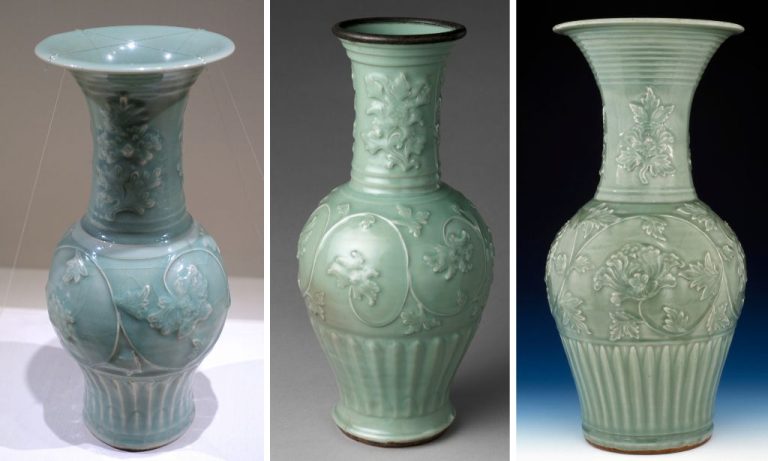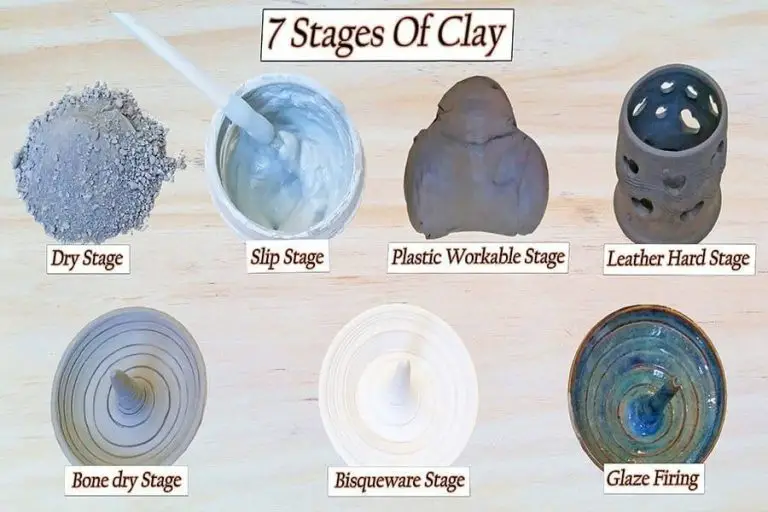Can You Make Ceramics For A Living?
Making ceramics can absolutely be a fulfilling career path for artists who are passionate about working with clay. While becoming a professional potter requires dedication, skill development, business savvy, and perseverance, many ceramic artists successfully earn a living selling their functional and sculptural ceramic work. This article will provide an overview of how to turn pottery into a viable career, including the education and skills needed, setting up a studio, developing a unique style, building a portfolio, finding clients, pricing work fairly, maintaining work-life balance, and supplementing income. With commitment and smart strategies, ceramic artists can make a living following their creative passion.
Education Needed
While formal education is not always required to work as a ceramic artist, taking classes and getting a degree can provide important skills and knowledge (Source). Many aspiring ceramicists earn a Bachelor’s degree in Fine Arts, Sculpture, or Ceramics from an art school or university. Art schools allow students to take specialized courses in throwing, handbuilding, glazing, and more. Students build a portfolio and gain access to studio space, kilns, and equipment.
Other ceramic artists learn through apprenticeships with experienced potters. Working as a studio assistant provides hands-on training in clay techniques. Some artists also remain self-taught, learning techniques through books, online tutorials, and experimentation in their own home studios. While formal education is not required, some background in art and design is recommended to develop the necessary creative and technical skills.
Studio Setup
Setting up a functional ceramics studio requires investing in certain essential equipment, materials, and space. The main pieces of equipment needed include:
- A pottery wheel – An electric wheel typically costs $1,000-$1,500.
- A kiln – Kilns range greatly in price based on size and features, but expect at least $1,000 for a starter kiln. Larger production kilns can cost over $5,000 (Source).
- Clay working tools – Basic tools like sculpting knives, ribs, trimming tools, etc. will likely cost a couple hundred dollars to start out.
- A work table or tables for wedging clay.
- Shelving for storing greenware, glazes, supplies.
In terms of space, you’ll need enough room for the wheel, work tables, shelving, and kiln. The kiln may need ventilation so check manufacturer requirements. Also consider accessibility – doors and hallways wide enough to move large work in and out.
Aside from equipment and furniture, you’ll need operating materials like:
- Clay – Many varieties exist with different firing temps and properties.
- Glazes & underglazes
- Kiln furniture like shelves and posts
- Kiln wash to protect kiln surface
Factor in all startup costs and continued material expenses when budgeting for a functional studio.
Developing Your Style
Finding your own unique style and aesthetic as a ceramic artist takes time and practice. It’s important to focus on improving your fundamental skills and techniques first, while also exploring different clays, glazes, forms, and decorative approaches to see what resonates with you. Some tips for developing your personal ceramic style include:
– Experiment with different clays like porcelain, stoneware, and earthenware to see how they handle. The clay body you choose impacts the final look and feel of pieces.[1]
– Try a variety of glazes and surface decoration methods like sgraffito, mishima, carving, slip trailing, etc. Observe how different glaze colors and textures complement your forms.
– Don’t be afraid to take risks and push yourself outside your comfort zone artistically. This allows you to grow and develop new skills.

– Focus on the fundamentals like centering clay on the wheel, achieving an even wall thickness, and mastering joinery. Solid techniques provide a strong foundation.
– Study ceramic artists you admire but don’t copy them directly. Let their work inspire your own interpretation and style.
– Give yourself time to find your voice. Your style will emerge organically through continuous practice and exploration.
Building a Portfolio
A strong portfolio is essential for ceramic artists to get their work noticed and secure commissions or gallery representation. Your portfolio should showcase your distinct style, technical skills, and creative vision through 10-15 high quality photos of your best pieces. According to Format, ceramic portfolios should highlight functional ware like cups, plates, and bowls, as well as sculptural works that demonstrate your artistic abilities.
In addition to professional photographs of finished pieces, you can also include in-process shots of you throwing on the wheel or handbuilding that provide a behind-the-scenes look at your techniques. Your portfolio should have a clean, modern look and consistent image quality. Consider investing in a professional photographer if needed to really make your pieces shine.
An active social media presence like an Instagram account or Facebook page is also crucial these days to get exposure for your brand. Share photos of your latest creations and works in progress, as well as videos of you demonstrating techniques when possible. Engaging with the ceramics community by commenting and liking others’ posts can also help build an audience.
Applying to juried ceramic art shows and competitions is another great way to build up your portfolio with professional photos of your booth display. According to JobzMall, having a few published exhibition catalogs featuring your pieces really boosts your credibility as an artist.
Finding Clients
There are several effective ways to find clients as a ceramic artist looking to make a living. One of the most common is through art galleries. Galleries provide exposure by displaying your work and handling the sales process on your behalf in exchange for a commission. According to ceramic artist Sam Chung in an interview with Ceramic Arts Network, “Galleries are the bread and butter for most ceramic artists.” He recommends being selective about which galleries you approach and building relationships over time (Ceramic Arts Network).
Selling online through your own website or platforms like Etsy opens up opportunities to sell your ceramic work to a global audience. You can attract customers by optimizing your pages and listings for relevant search terms. Photographing your pieces in an attractive way and writing strong product descriptions can also help generate sales online. Custom pieces made-to-order can be lucrative. Reaching out to previous clients or wedding planners who order custom ceramic pieces for events is a great way to generate commissions and referrals.
Pricing Work
Determining how to price your ceramic work can be challenging. Here are some factors to consider when setting prices:
Cost of materials – Include the costs of clay, glazes, firing, electricity, studio rent, etc. Price high enough to cover expenses and make a profit. According to Expert Clay, add $5 for larger sizes, trimming, additional glazes, decorations, and handles.
Time invested – Consider the hours spent making each piece. Pay yourself a reasonable hourly wage. Old Forge Creations recommends dividing hours worked by pieces made for max production.
Uniqueness and quality – More intricate, detailed, or one-of-a-kind pieces often warrant higher pricing. Price for the value of your skills and artistry.
Market factors – Research prices of comparable work by other ceramic artists. Price within the typical range for your experience level and local market.
Wholesale vs. retail – Wholesale prices are typically 40-60% of retail price. Retail directly to customers for maximum profit.
For a full-time living, aim for $25-$50 per hour of work. Be confident in charging what you deserve. Avoid underpricing – it undervalues your work and skills. Price consistent with your brand and target audience.
Maintaining a Healthy Work-Life Balance
As a full-time ceramic artist, it’s important to maintain a healthy work-life balance to avoid burning out. Pushing yourself too hard in the studio can lead to creative blocks and a lack of inspiration. Be sure to take regular breaks, get outside for some fresh air, and engage in non-ceramic hobbies you enjoy. Consider setting work hours for yourself so you don’t end up working around the clock.
It’s also essential to build time for self-care into your routine. Activities like yoga, meditation, and journaling can help manage stress. Make sure you are eating well, staying hydrated, and getting enough sleep each night. Take a day or two off each week to recharge. Listen to your mind and body, and don’t be afraid to take a short break from ceramics if you start feeling burnt out.
“Preventing Burnout: Self-Care Tips for Artists and Business Owners. If you’re feeling overwhelmed, tap into your self-care routine. Take a walk, call a friend, meditate, or engage in a hobby you love. Know your limits and give yourself permission to take a break.” (Source)
Additional Income
Teaching workshops is a great way for ceramic artists to supplement their income. Many artists enjoy sharing their knowledge and techniques with eager students. Workshops can be hosted locally at your studio, at a community center, or online via video platforms. Topics might include handbuilding techniques, throwing on the wheel, glazing, sculpting, and more. Some artists teach week-long intensive workshops that students travel for. Teaching allows artists to monetize their skills while giving back to the ceramic community. It also provides valuable marketing exposure. Satisfied students often become collectors of the artist’s work. Rates typically range from $50-500 per student depending on the workshop length and the instructor’s reputation.
Writing books and articles is another income stream for accomplished ceramic artists. As experts in their medium, artists can share their wisdom through how-to guides, coffee table books, memoirs, and online articles. While payment rates vary, a book advance might pay $5,000-20,000 and magazines usually pay $150-500 per article. The publicity gained through publishing raises the artist’s visibility and credibility. Some artists also sell branded merchandise like t-shirts, mugs, and tools featuring their designs and logo. Teaching, writing, and merchandising allow artists to earn income beyond just selling their artwork.
Sources:
https://ceramicartsnetwork.org/daily/article/4-Successful-Potters-Give-Advice-on-How-to-Make-a-Living-Making-Pottery
https://www.quora.com/What-are-some-ways-to-earn-money-from-making-and-selling-ceramic-pots
Conclusion
In summary, making ceramics for a living is certainly possible with the right dedication and skillset. The most critical factors are developing a strong portfolio showcasing your unique style, finding a good studio space and equipment to work in, establishing client relationships and reasonable pricing for your work, and being prepared for the realities of balancing art and business. While it takes time to build up a steady income purely from ceramic sales and commissions, the potential for creative fulfillment and establishing yourself as an artist makes it a rewarding career path to pursue. With passion for the craft, business savvy, and perseverance, ceramic artists can develop fulfilling and sustainable careers.
The key is to not let the business side overtake the artistry. Approach ceramics first and foremost as a creative pursuit rather than just a source of income. Build up your skills, style, and portfolio and the rest will follow. Stay inspired in your work, continue growing as an artist, connect with clients who appreciate your vision, and you can absolutely make a living from your ceramic creations.



